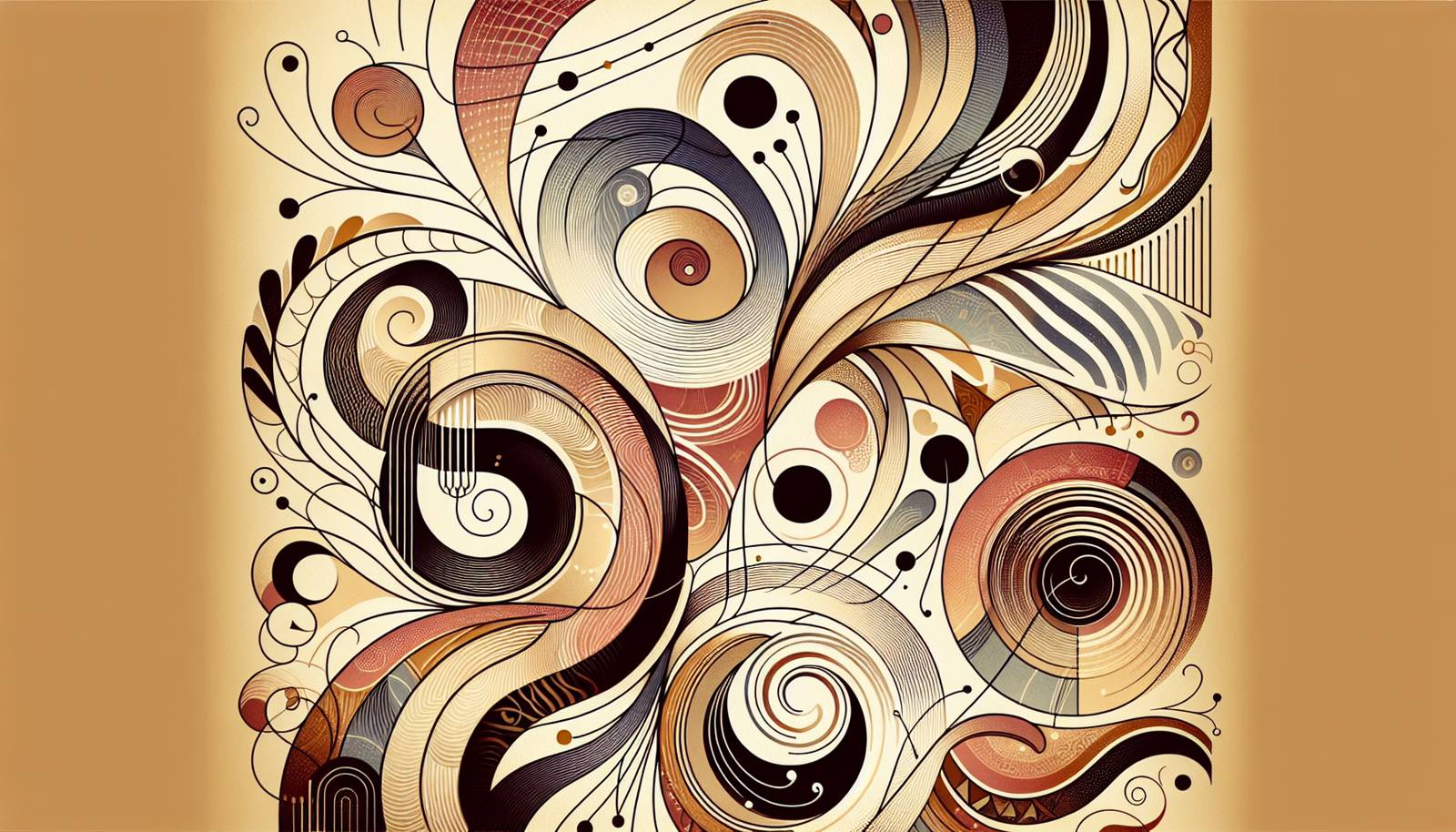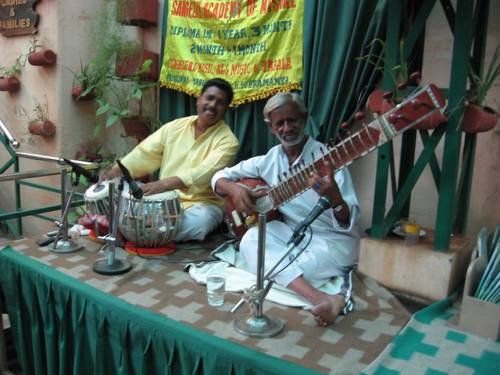
FAQ About The Influence of Carnatic Music on Global Music Forms

What is Carnatic music and where did it originate?
Carnatic music is a classical music form originating from South India. It is one of the two main subgenres of Indian classical music, the other being Hindustani music from the North. Carnatic music is characterized by a strong emphasis on vocal music; most compositions are written to be sung, and instruments are designed to mimic the singing voice.

How has Carnatic music influenced global music forms?
Carnatic music has influenced global music forms primarily through its complex rhythms, sophisticated melodies, and intricate structures. Musicians from genres like jazz, rock, and world music have integrated elements of Carnatic music into their works, exploring new sounds and rhythms that enrich and expand their musical expression.

Can you provide examples of global musicians influenced by Carnatic music?
Artists like John McLaughlin, Zakir Hussain, and even bands like The Beatles have drawn inspiration from Carnatic music. John McLaughlin, for instance, incorporates Carnatic rhythms and scales in his jazz fusion compositions, bringing this traditional sound to international audiences.

What are the key elements of Carnatic music that appeal to global musicians?
Global musicians are drawn to Carnatic music for its rhythmic intricacy, melodic richness, and the unique raga system. The use of tala (rhythmic cycles) and kriti (compositions) allows artists to experiment with time signatures and create complex, layered works that are both intellectually and emotionally engaging.

How does Carnatic music typically influence contemporary music genres?
In contemporary music genres, Carnatic music contributes through fusion, where its ragas and talas blend with modern musical forms like rock, pop, and electronic music. This creates innovative musical pieces that resonate with diverse audiences while preserving the essence of both traditional and contemporary sounds.

What role does improvisation play in Carnatic music and its global influence?
Improvisation is a cornerstone of Carnatic music, much like in jazz. This feature allows musicians to freely express themselves within the set structure of ragas and talas, making it particularly appealing for collaborations across different musical traditions and genres that prioritize creativity and spontaneity.

How do Carnatic music rhythms, or "tala," integrate with Western music styles?
The tala system in Carnatic music, with its complex rhythmic cycles, has intrigued Western musicians for its potential to create new rhythmic patterns. These cycles can be seamlessly combined with Western time signatures to produce unique polyrhythmic pieces that challenge and delight listeners.

What is a "raga" in Carnatic music and how does it translate to global music forms?
A raga in Carnatic music is a framework for melody construction. Each raga is associated with specific moods and emotions. Globally, ragas are used by musicians to create evocative pieces by integrating these melodic frameworks into different scales and harmonies, enhancing their musical storytelling.

Are there modern artists who fuse Carnatic music with electronic music?
Yes, several modern artists fuse Carnatic music with electronic music, creating experimental and engaging soundscapes. Artists like Karsh Kale and Talvin Singh have successfully integrated traditional Carnatic elements with electronic beats, demonstrating the versatility and global appeal of Carnatic music.

In what ways has Carnatic music contributed to the field of music education globally?
Carnatic music has contributed significantly to music education by offering detailed insights into rhythmic structures, improvisation techniques, and melodic composition. Its comprehensive approach to learning music provides global students with a robust framework to explore and master diverse musical aspects.

How do Carnatic music festivals promote its global influence?
Carnatic music festivals, such as the Chennai Music Season, attract musicians and audiences from around the world. These festivals serve as platforms for cultural exchange, allowing for the sharing of styles and techniques, thus promoting a wider appreciation and influence of Carnatic music globally.

What technological advancements have helped spread Carnatic music globally?
Technological advancements such as streaming services, online tutorials, and social media have greatly contributed to spreading Carnatic music globally. These platforms make it easier for enthusiasts and musicians worldwide to access, learn, and perform Carnatic music, thus broadening its reach and influence.

Can Carnatic music be integrated into film scores or soundtracks?
Absolutely, Carnatic music has been integrated into film scores and soundtracks, adding depth and authenticity to a variety of cinematic genres. Notable composers like A.R. Rahman have successfully incorporated Carnatic elements into their scores, enriching the emotional and cultural dimensions of their films.

Is Carnatic music popular in the Western classical music world?
While not as mainstream as Western classical music, Carnatic music has gained respect and interest within classical music circles for its complexity and rich tradition. Collaborations and performances by Carnatic and Western classical musicians are increasingly common, reflecting a growing appreciation.

What challenges do musicians face when fusing Carnatic music with other genres?
Musicians often face challenges such as maintaining the authenticity of Carnatic music while ensuring a cohesive blend with other genres. Balancing complex rhythms and unique scales with more straightforward musical forms often requires a deep understanding of both musical styles.

How have international music collaborations helped in popularizing Carnatic music?
International collaborations, such as those between Indian musicians and international artists, have been instrumental in popularizing Carnatic music. These partnerships expose wider audiences to Carnatic styles and create innovative music that resonates on multiple cultural levels.

What are some misconceptions about Carnatic music's influence on global music?
One common misconception is that Carnatic music is too complex and traditional to integrate with modern music. However, its rich structural elements can complement and enhance modern music forms, offering new textures and harmonic possibilities.

How does the structure of Carnatic music compositions resemble that of Western music forms?
Both Carnatic and Western music use structured compositions, but Carnatic music often emphasizes improvisation within these structures, similar to jazz. Key elements such as the exposition, development, and recapitulation in Western classical compositions can be paralleled with the alapana and kriti sections in Carnatic music.

Are there educational resources available for learning about Carnatic music's global influence?
Numerous educational resources, including academic journals, online courses, and workshops, are available for those interested in learning about the global influence of Carnatic music. These resources offer insights into its history, structure, and collaborations with other musical forms.

What is the future potential of Carnatic music in global music trends?
The future potential of Carnatic music in global trends is significant as more artists seek to explore and integrate its rich traditions. As global music becomes more interconnected, Carnatic music's influence is likely to grow, fostering new hybrid genres that celebrate cultural diversity.
